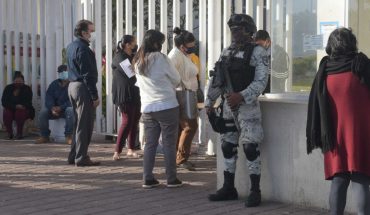On December 8, 2022, the Minister of Agriculture, Esteban Valenzuela, reported the discovery of the first case of avian influenza in Arica. Since then, infections have not stopped increasing among wild birds and also affecting backyard birds.
Moreover, a first case has already been confirmed in a commercial Agrosuper white meat plant in Rancagua. However, birds are not the only ones affected by highly pathogenic avian influenza (H5N1), cases of mammals have also been reported, mainly in sea lions.
On February 16, the National Fisheries and Aquaculture Service (Sernapesca) confirmed the first case in the Antofagasta Region. In total, 112 sea lions have died in various parts of the coastal edge and 62 deaths have occurred so far in March.
While in the case of the Atacama Region, Sernapesca explained that 11 sea lions have died during the past weekend and a total of 128 Humboldt penguins. Because of this, it is that in the northern macrozone of the country, a monitoring procedure of the regional coasts was initiated to evaluate the state of the penguin colonies and wolf basins.
The impact of mass deaths on the ecosystem
The situation raises questions about the impact these mass deaths may have on the balance of the marine ecosystem. The Doctor in Biological Sciences, Angello Retamal, and scientist at the Center for Research in Biomedical Immunology of the University of Antofagasta, hopes to sign an agreement with the SAG of the Region of Antofagasta and the Kennedy Foundation for the conservation of wetlands, to carry out an analysis of this situation during 2023.
The scientist told Emol that “he seeks to understand what will happen with this outbreak of avian influenza in our endemic fauna. To do this, we are already starting with the protocols to have access to the samples taken by the SAG, analyze them in our laboratory and be able to monitor, waiting for this outbreak to be self-limiting and not remain endemic (…) we have to understand, now with data, how this is progressing. ”
Therefore, he stresses that to prevent the virus from remaining for too long in the area, all the actions carried out by the SAG with the support of the regional authority and the schools are key. This, in addition, implies actions such as “being able to detect dead animals, being able to move them to pits and away from other predators, because we are not only concerned about sea lions, but also jotes, despite being uncharismatic animals and scavengers, are suffering”.
The numbers are still low
On the other hand, the doctor in Ecology and Evolutionary Biology and academic of the University of Valparaíso, Martiza Sepúlveda commented that the numbers of deceased sea lions are still low, however, “it is true that the number of animals that reach the beaches is a smaller proportion of those that are really dying, so presumably they are much more than those that reach the shore “, he pointed to Emol.
In that sense, the marine biologist also explains that “if we think that it is still a low number, in terms of ecosystem they should not yet play such an important role or such a significant impact.”
However, it is true that “sea lions play a role of controlling prey populations, so a decrease in population can affect that.”
In the same line, Retamal also argues that for now it is not possible to speak of an “affectation to the ecosystem”.
“The case of mammals worries us, if we consider that in addition in Arica they have already reported a dead chungungo that was infected, and also, because in the ecosystem we have different mammals. That is why we are working with the SAG, to contribute to organic responses in this matter, “he said.
Follow us on





